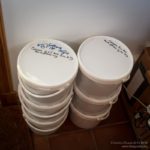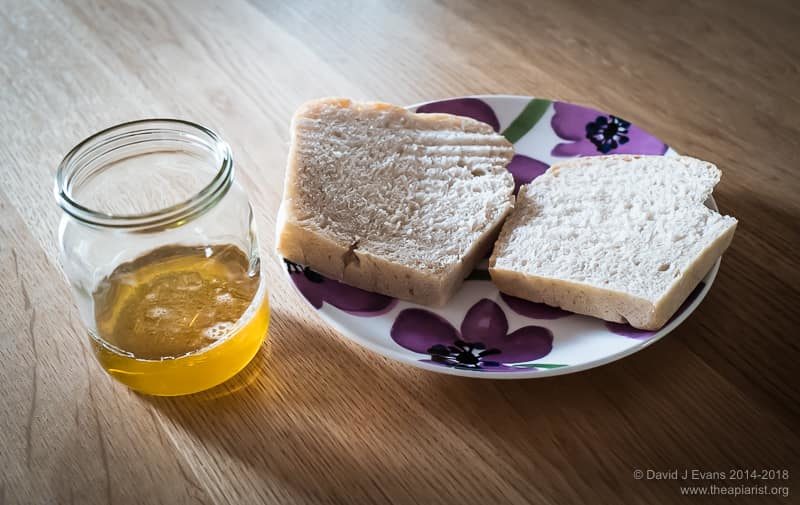Extractor cleaning
A honey extractor is one of the most expensive individual pieces of equipment a beekeeper is likely buy †. If you’re lucky, your association might own one or more extractors and make them available to borrow or hire. However you get hold of one, after use they need to be thoroughly cleaned before storing (or returning) them.
Don’t, whatever you do, follow the advice on some websites or beekeeping forums (fora?) and leave the extractor outside “for the bees to clean”. This is a very bad idea. The feeding frenzy that results is a perfect way to spread disease.
Patience, cold water, more patience and a hairdryer
The used extractor will have quite a bit of residual honey adhering to the sidewalls and floor. You can scrape this out using a flexible silicone spatula but it’s a messy process and almost guaranteed to cover you from wrist to oxter in honey. It’s far easier to:
- close the honey gate securely
- tip the extractor up at a steep angle so the honey runs towards the gate
- turn the heating up in the room and leave it overnight
The following morning the majority of the honey will have drained down towards the honey gate, this can then be bottled for home consumption or used for mead or marmalade making. It’s not unusual to get a pound or more of honey like this … it’ll be a bit frothy and might be less well-filtered but it will still be delicious.
To wash out the residual honey, wax and propolis from the extractor:
- level the extractor
- close the honey gate securely
- fill it completely with cold or cool water and leave overnight
- empty out the water, rinse well with more cool/cold water
- mop up the dregs with clean kitchen towel
- dry with a hairdryer set on ‘low’
Avoid using hot water as it melts any residual wax and makes it a lot harder to clean. The easiest way to complete this wash is to stand the extractor in the garden late in the evening (after the bees stop flying), fill it from the hosepipe and then empty it early the following morning. Almost all of the honey residues will have dissolved. The extractor can then be wiped out and dried with a hairdryer … I simply hang one inside the extractor for half an hour, set on the lowest heat setting and repositioning it periodically to get into all the corners. The stainless steel drum of the extractor warms very quickly, transmitting the heat throughout the extractor.
† Unless you’re semi-commercial or larger in scale in which case you might have bought anything from a €1600 bottling machine to a £really?! Unimog


Join the discussion ...